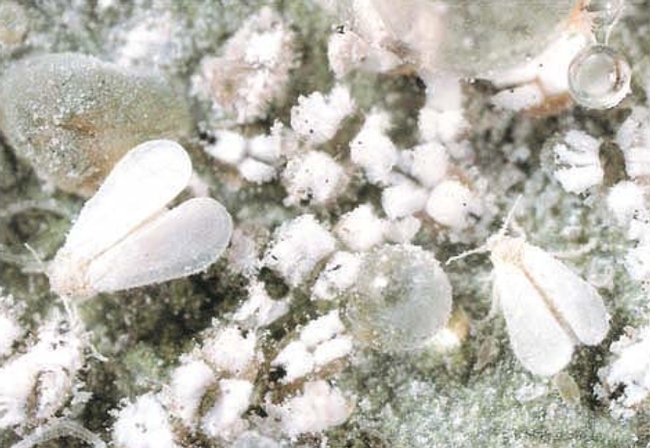A common springtime nuisance, whitefly populations have escalated this year in California Central Coast areas, reported Megan Healy on KSBY Channel 6 in San Luis Obispo.
People are mistaking them for clouds of pollen or ash; some leaves look like they're coated with a thin layer of new-fallen snow.
The reporter spoke to Cathryn Howarth, a UC Cooperative Extension Master Gardener in San Luis Obispo County. She said the office has received dozens of calls from residents wondering why the whiteflies are so abundant this year.
"It's probably a reflection of the increasing temperatures coming on top of all that nice water we have had, so we have had a flush of vegetation and the flies that came from eggs originally have just all hopped out," Howarth said.
The story referenced the UC Agriculture and Natural Resources Integrated Pest Management Program, which has produced a Pest Note on whiteflies that says signs of an infestation include:
- Tiny nymphs on the underside of leaves
- Sticky honeydew on leaves or a covering of black sooty mold
- Yellowing, silvering or drying of leaves that have whitefly nymphs on them
Howarth said home gardeners can spray the whiteflies with a stream of water from a hose or spray them with insecticidal soap to reduce the population. The pest has abundant natural enemies in the yard, including ladybugs, spiders, lacewings and hummingbirds. However, whitefly outbreaks can occur when the natural biological control is disrupted.
For more information on whitefly management, read the UC IPM Pest Note on whiteflies.
